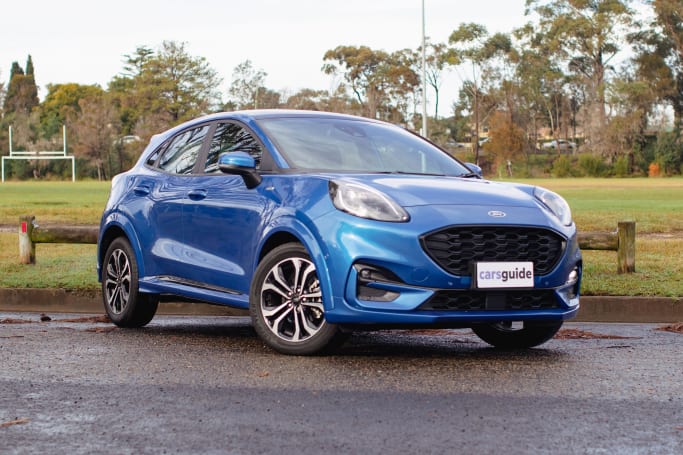
Can Kia topple Mazda in 2025? How the Kia Tasman ute, EV5 electric car and next-gen Mazda CX-5 could shape the sales charts in Australia this year
Kia set a sales record in Australia last year and the company’s boss...
Browse over 9,000 car reviews

Ford Australia has confirmed it will introduce an all-electric Puma as the next EV in its short-term plans, taking on the likes of the MG ZS EV and BYD Atto 3.
The Puma will join the recently-launched E-Transit large van, as well as smaller Transit Custom and Mach E – the latter of which took the opportunity of the Australian Formula 1 Grand Prix to announce it would be arriving in local showrooms.
The brand had firm plans to unleash five new EVs by the end of next year, but the final member of this club has not yet been announced.
Speaking at the E-Transit launch, Ford Australia President and CEO Andrew Birkic said the new BEV models would "play to our strengths in terms of our heritage and DNA."
"We're cherry-picking the best (Ford) products from around the world".
Alluding to the current supply issues facing the global car industry, Mr Birkic also told Carsguide: "As well as the best products globally, we're also making sure we can get the right quantity and the right specification."
Beyond that, however, Mr Birkic declined to offer any details of the Puma's specification or marketing plans.
One of Ford's smallest passenger-car products, the Puma has most recently been anointed as the (somewhat indirect) replacement for the Fiesta which has been retired globally.

Available with an internal-combustion engine since 2019 in Australia, the electric variant is believed to use an all-new BEV-dedicated platform, with speculation that there would be some component commonality with the European-market Transit Courier, a compact van.
That would make sense as the conventionally powered Courier which launched in 2015, shared major components with the concurrent Fiesta, and would underpin the Puma's Fiesta-replacement credentials.
The electric Puma will retain the ICE version's crossover styling and themes and the general accommodation layout.
For reference, the petrol-powered Puma makes use of a 1.0-litre turbo-petrol three-cylinder engine, which punches out 92kW/170Nm to the front wheels.
Pricing kicks off from $30,840 before on-road costs for the Titanium, and extends to $36,390 for the top-spec ST-Line V.
Expect that the all-electric version will sit above this range however, given the current cost and complexity of and all-electric drivetrain.
The Puma EV does not have any direct competitors in the light SUV class, though in a size-class up, local buyers have access to the Hyundai Kona Electric (from $54,500), Mazda MX-30 E35 ($65,610) and MG ZS EV (from $44,900 driveaway), as well as the BYD Atto 3 ($48,011 before on-road costs) mid-size SUV.
Comments